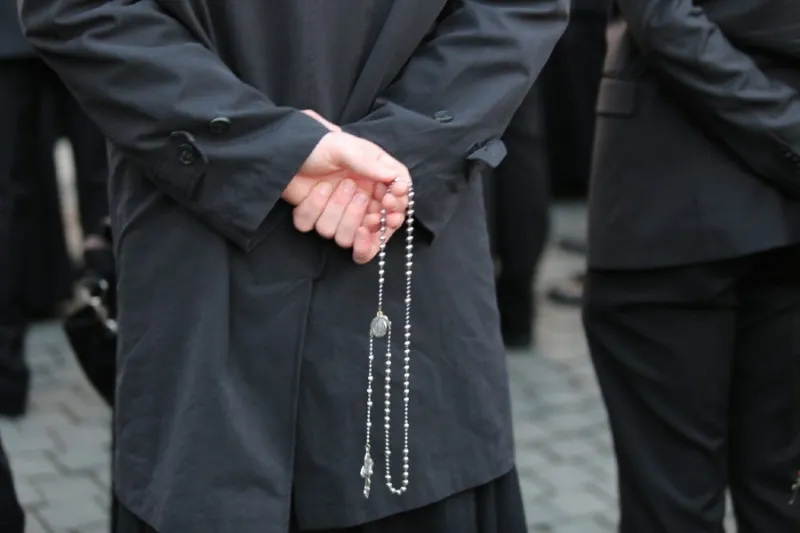
Washington D.C., Oct 7, 2021 / 13:02 pm (CNA).
A “National Rosary Rally” in Washington D.C. on Oct. 10 will cap a 54 day rosary novena for the “protection and provision for the USA and the world,” prayed by Catholics around the country.
“We now need to implore graces from Almighty God, to lead the Pope and the Bishops to follow sound doctrine and tradition, and firmly reject modernist interpretations of the priesthood, religion, and inculturation,” the website for Rosary Coast to Coast 2021, which is organizing the event, states.
The rosary novena began on Aug. 15, the Solemnity of the Assumption of the Blessed Virgin Mary, and ended on Oct. 7, the feast of Our Lady of the Rosary.
The national rosary rally will be held in Washington, D.C. on Oct. 10, and local rallies are encouraged at state capitols and other public places around the country. “We are asking everyone to join us in Union Square in front of the U.S. Capitol for a very special Rosary Rally on October 10,” the website says. “We want to call out to God in a very special way at the conclusion of our 54 Day Rosary Novena.”
Participants are asked to assemble at St. Peter’s parish on Capitol Hill at 1:30 p.m, followed by exposition of the Blessed Sacrament at 1:55 p.m. and a procession at 2 p.m. to the rally site at Union Square. A rosary will be prayed during the Eucharistic procession.
During the rally, participants will be accompanied by the Immaculate Heart of Mary statue from the World Apostolate of Fatima USA.
For those who are unable to attend the national rally, they are encouraged to attend local rallies or pray outside a nearby abortion clinic or at their parish church. Recitations of the Glorious Mysteries of the rosary will commence on Sunday at 4 p.m. Eastern Time.
The rally will feature speakers including Bishop Joseph Coffey, auxiliary bishop for the Archdiocese of the Military Services; Fr. Chris Alar, MIC; Sister Deirdre Byrne, superior of the Little Workers of the Sacred Hearts; and Doug Barry, founder of the Catholic apostolate Radix-Battle Ready.
The initiative has received endorsements from Raymond Cardinal Burke, Bishop Athanasius Schneider, and Fr. Donald Calloway MIC, author of Consecration to St. Joseph.
If you value the news and views Catholic World Report provides, please consider donating to support our efforts. Your contribution will help us continue to make CWR available to all readers worldwide for free, without a subscription. Thank you for your generosity!
Click here for more information on donating to CWR. Click here to sign up for our newsletter.




Leave a Reply